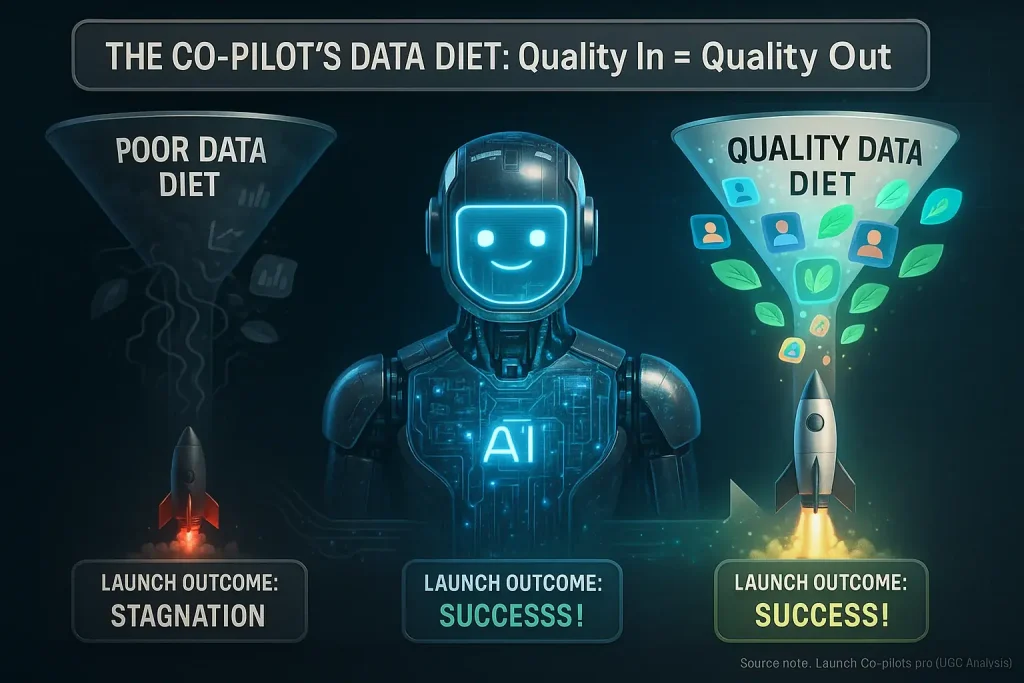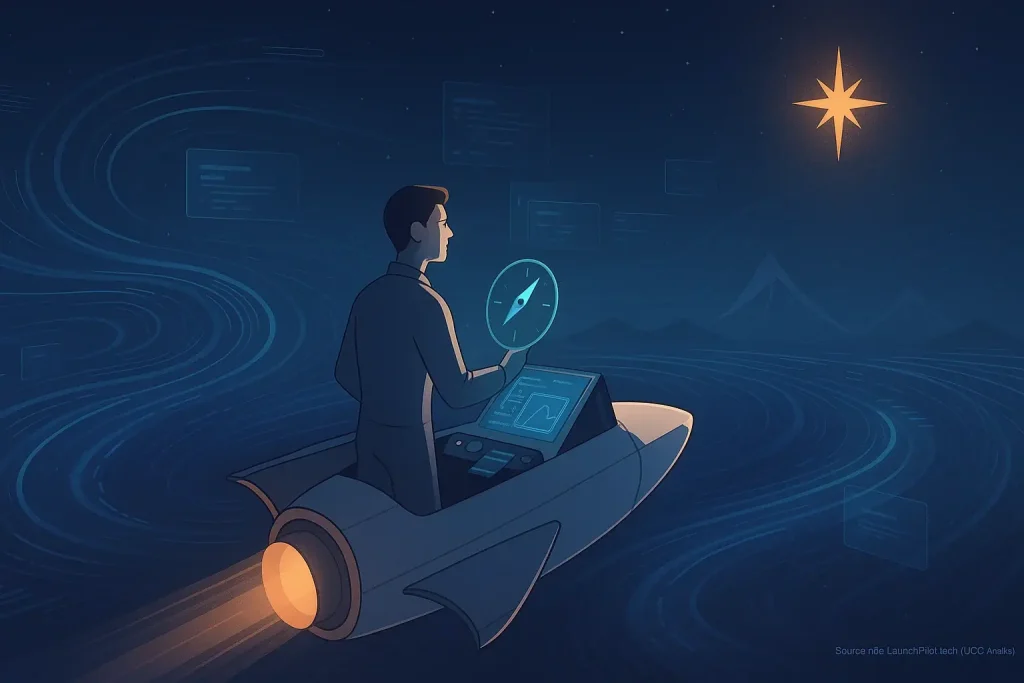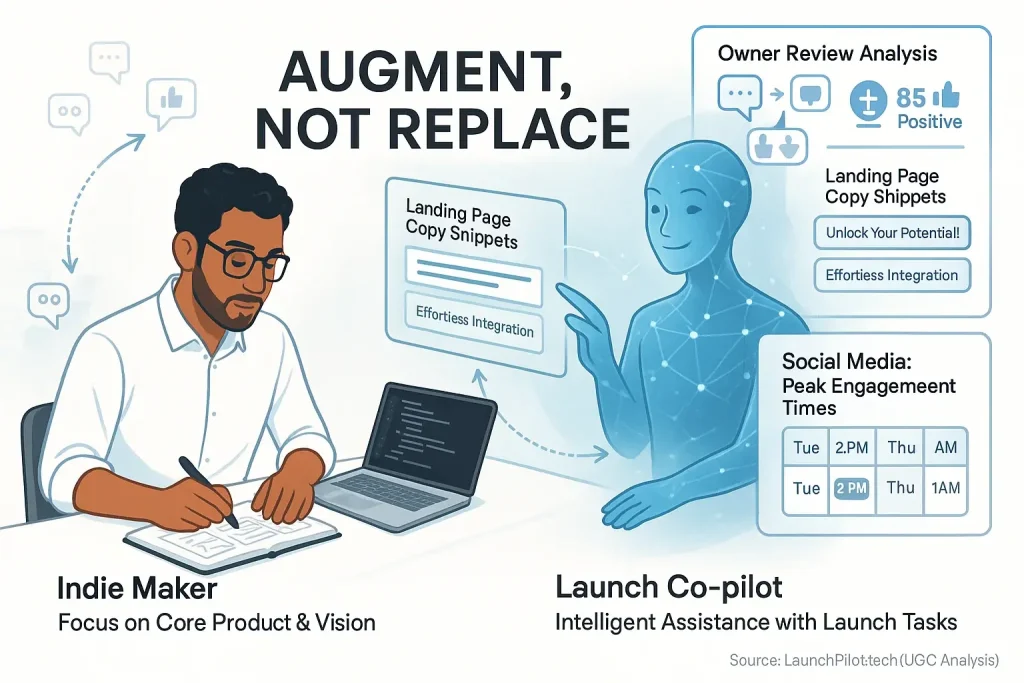The 'Easy Setup' Promise: Why It's Often a Mirage for Indie Makers

Analytical content Launch Co-pilots often shout 'easy setup!'. Indie makers hear this. Hope sparks. But does this marketing claim withstand real-world indie pressure? Community voices suggest a different story unfolds post-unboxing, meaning that 'easy' part demands closer scrutiny.
User team Co-pilot ease of use frequently misses marketing's glossy promises. Our deep analysis of indie maker feedback reveals a consistent theme. A significant learning curve often challenges new users. Non-technical founders particularly report this hurdle. We dig into community-reported experiences. Our goal: uncover the true initial effort.
Marketing's 'Plug & Play' Dream vs. Your Indie Reality: User Reports on First Impressions
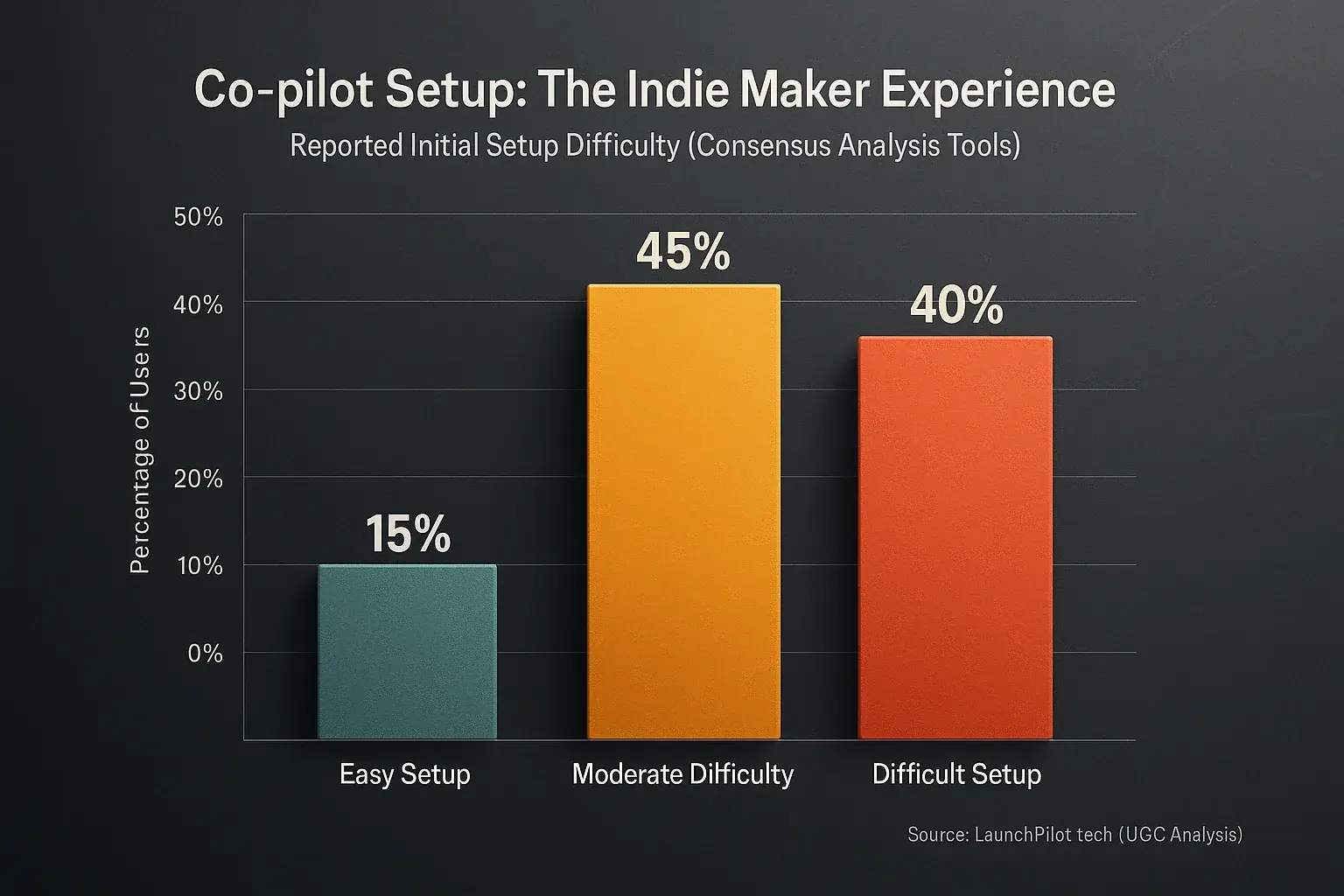
Marketing often shouts: "Launch in minutes!" Sounds great. But what does the indie community actually find? Our synthesis of user feedback paints a different picture. Many makers, excited by easy promises, dive right in. They then confront a dashboard. It feels more like an airplane cockpit. Not a simple switch. This initial complexity creates immediate overwhelm for many. That 'plug and play' feeling? Often missing.
What trips up creators most? Users frequently cite initial data input. This becomes a major hurdle. Many report spending hours just inputting product details and audience information. This echoes a common sentiment across forums. Connecting various accounts also causes headaches, according to aggregated feedback. The sheer volume of options can paralyze. Then there's the jargon. Marketing terms abound. A surprising insight from community discussions? Some 'no-code' platforms still presume significant marketing knowledge. You need this understanding just to populate fields correctly.
This mismatch between expectation and early experience breeds frustration. Indie makers often feel inadequate. Valuable time gets wasted. The collective wisdom from indie launch communities points to a clear consequence. This initial friction frequently leads to 'launch tool fatigue'. Motivation plummets. It happens even before the core work starts. A quick path to discouragement.
So, what is the real story on setup? The 'easy setup' promise often means something else. It typically means easy to begin. Not always easy to use effectively. Or master. Our rigorous examination of aggregated user experiences reveals a common pattern. A learning curve nearly always exists. You should anticipate this investment.
Beyond the Buttons: What Really Shapes Your AI Co-pilot's Learning Curve (Indie Factors from UGC)
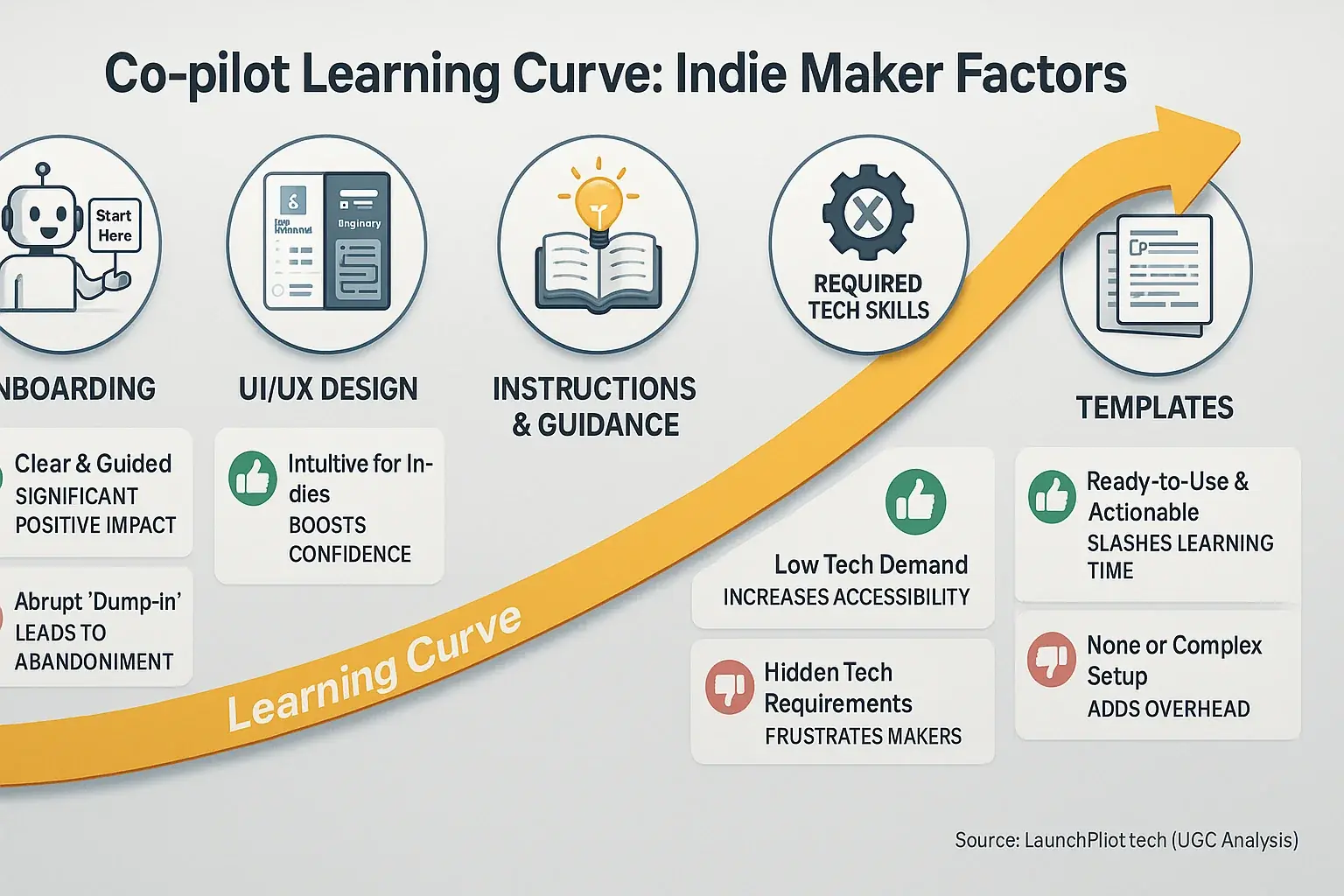
A co-pilot's learning curve isn't just UI. Many factors play a role. Our user content analysis shows onboarding quality is pivotal. Clear, guided tours with examples make a huge difference for indie makers. A "dump you in" approach, however, frequently causes users to feel lost and abandon tools early.
Many feedback tools, indie makers find, are built for seasoned marketers, not them. This engineering focus can make the UI a labyrinth for someone juggling ten roles. Clear, jargon-free instructions are thus golden, though often missing. The best tools, users share, go further. They explain why an action matters for your launch.
Despite claims, some user-generated team co-pilots subtly require tech skills, like API know-how. This hidden demand frustrates many indie creators. The saving grace, according to user experiences, is simple templates. Pre-built templates for common launch tasks truly slash learning time. They let makers bypass complexity and start fast.
These elements together define your co-pilot's real learning curve. Smooth onboarding, indie-focused UI, clear guidance, low tech needs, and ready templates are all key. The indie launch community's experience underscores this. A tool mastering these aspects empowers. It speeds up your journey from feedback to launch success.
Your Personalized AI Co-pilot Learning Curve Estimator: How Much 'Pilot Training' Will YOU Need?
Estimate Your AI Co-pilot Learning Curve
Answer a few quick questions to get a personalized estimate of how much 'pilot training' you might need for an AI Launch Co-pilot.
Grasping your learning curve for user content co-pilots is key. Many indie makers echo this. The estimator tool offers a personalized starting point. This self-assessment helps you gauge readiness. It guides your unique path to successful adoption.
Your estimated learning curve now guides your approach. A steeper curve might seem daunting. Don't worry. Focus on official tutorials first. Many users recommend breaking the co-pilot learning process into small, achievable wins.
This user-validated strategy makes learning feel much less overwhelming. What if your curve is minimal? Dive deeper into the co-pilot. Explore advanced features. You can quickly customize workflows for your specific indie maker needs.
Conquering the Learning Curve: Indie-Tested Strategies to Master Your AI Co-pilot Fast (No Tech Degree Required!)
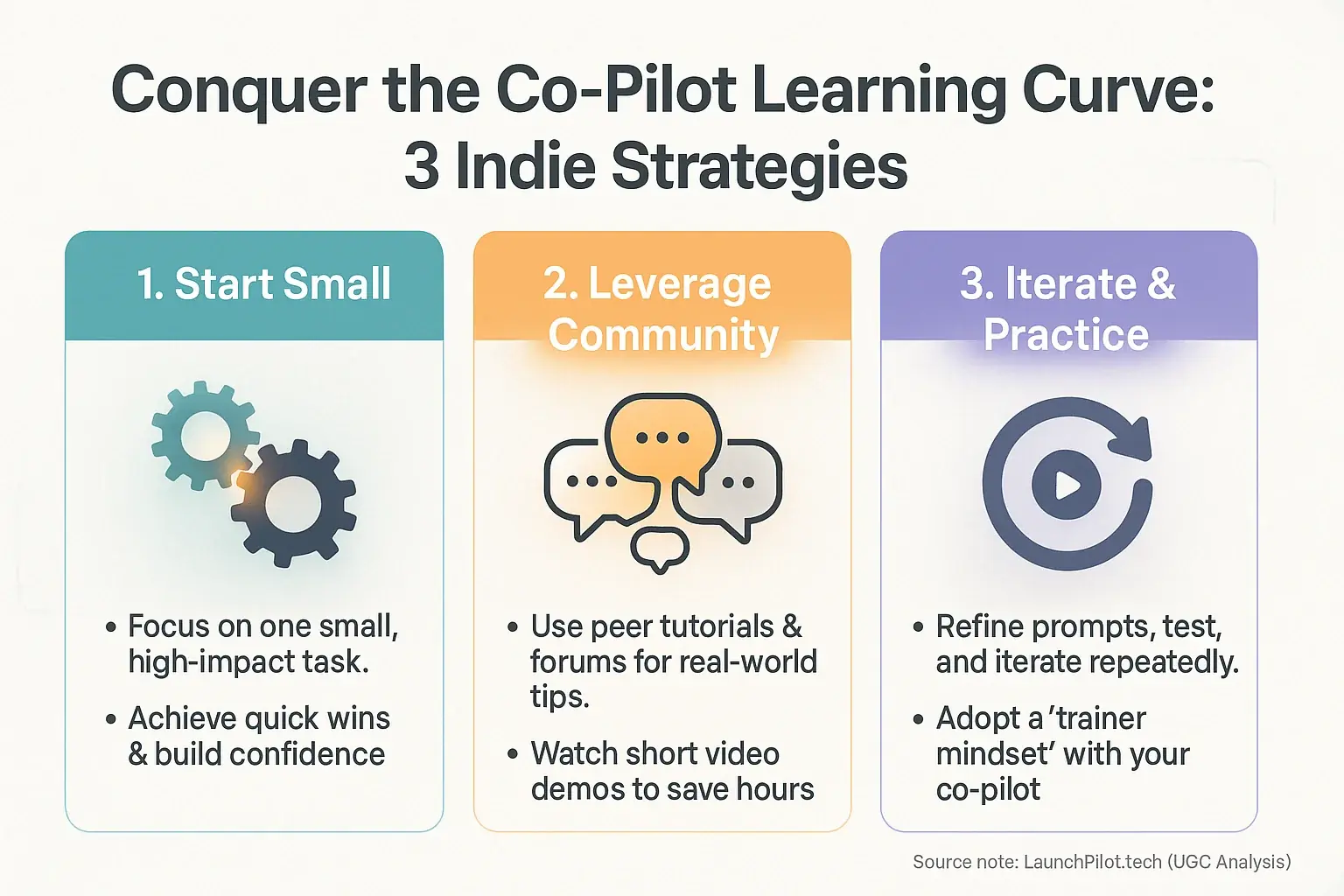
Mastering your feedback analysis co-pilot is a learned skill. It is not automatic. Many indie makers find clever ways to accelerate this process. Our analysis of user experiences shows a path. Do not try automating your entire launch on day one. Indie creators frequently advise picking one small, high-impact task. Drafting a welcome email sequence is a common example. Master that single function first. This method builds strong confidence. It also provides satisfying quick wins.
The indie maker community offers a goldmine of shared knowledge. Many makers discover peer-to-peer tutorials hold more practical value. Forum discussions also provide solid, real-world insights. These resources frequently outperform official documentation for day-to-day use. Look for those unofficial 'hacks'. Seek out specific examples from other indie creators. A key insight from aggregated user experiences reveals a useful time-saver. Power users frequently report this. Watching someone else use the tool on YouTube, even for just ten minutes, can prevent hours of trial-and-error.
Consider your feedback analysis co-pilot a new team member. It needs your guidance. It also requires regular practice to improve. Expecting perfection from the initial prompt is a common mistake. Do not fall for it. The collective wisdom from the indie launch community points to a strategy. Refine your prompts thoroughly. Test all outputs. Iterate on your approach repeatedly. This focused, iterative loop develops your deeper understanding of the tool. Full mastery grows from this process.
This shift changes your role. Your role moves beyond tool usage. You are training your co-pilot. Adopting this trainer mindset matters. It unlocks the co-pilot's full potential for your launch.
The Bottom Line: Don't Let the Learning Curve Deter Your AI Launch Dreams
That "easy setup" promise for user content co-pilots? Often a distant memory. Many indie makers quickly discover this truth. Every powerful tool involves a learning curve. No shortcuts. The core question remains: are the rewards worth this climb? Our analysis of extensive user discussions indicates a strong "yes." Indie makers absolutely can master these co-pilots.
Mastering your user content co-pilot unlocks substantial benefits. This goes beyond just saving time. You gain significant efficiency. Strategic insights, previously hidden, become clear. These insights fuel smarter launch decisions. A key outcome reported by users: launching with newfound confidence.
The journey to co-pilot proficiency is a manageable ascent. It transforms your entire launch approach. LaunchPilot.tech helps illuminate that path. Your successful launch is achievable.
